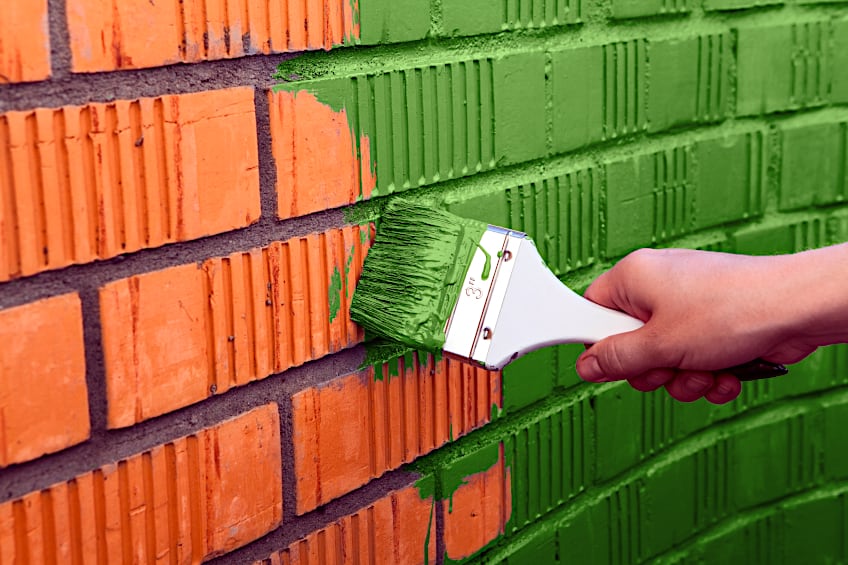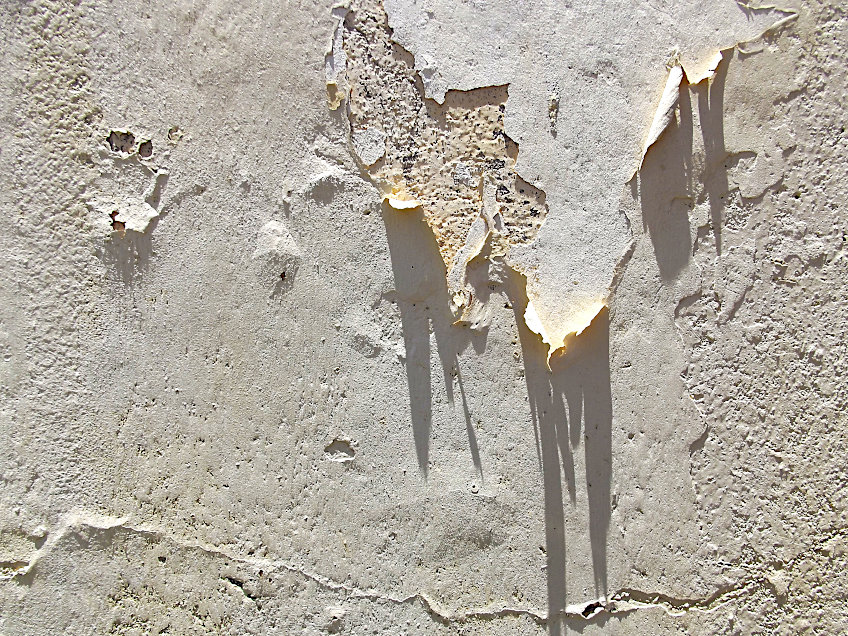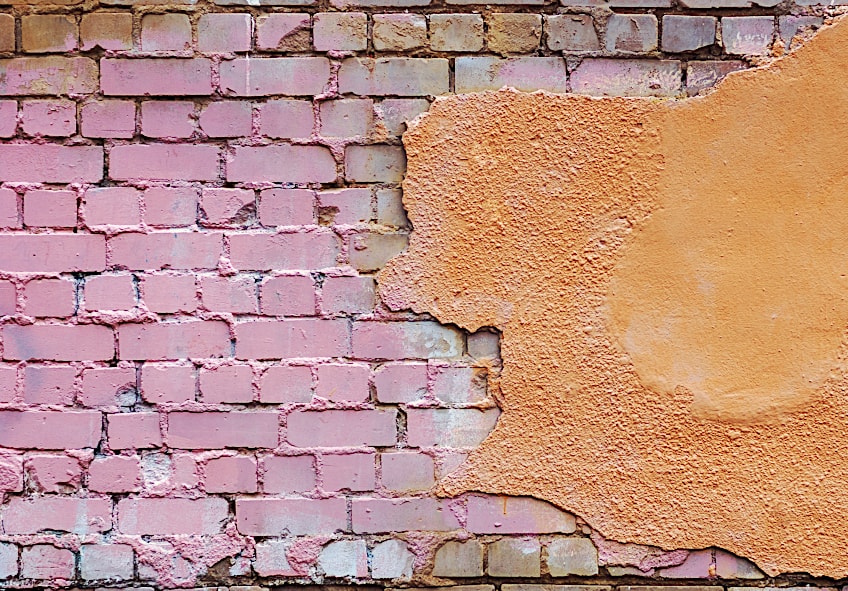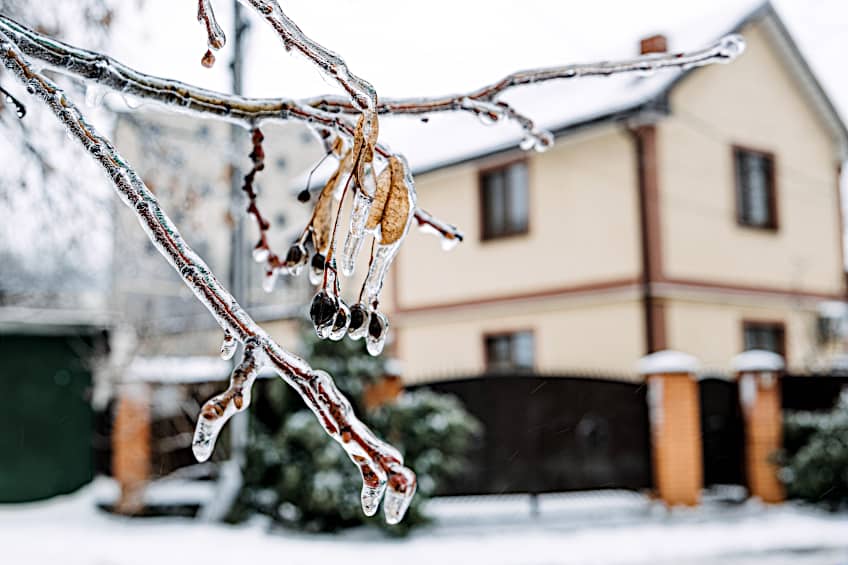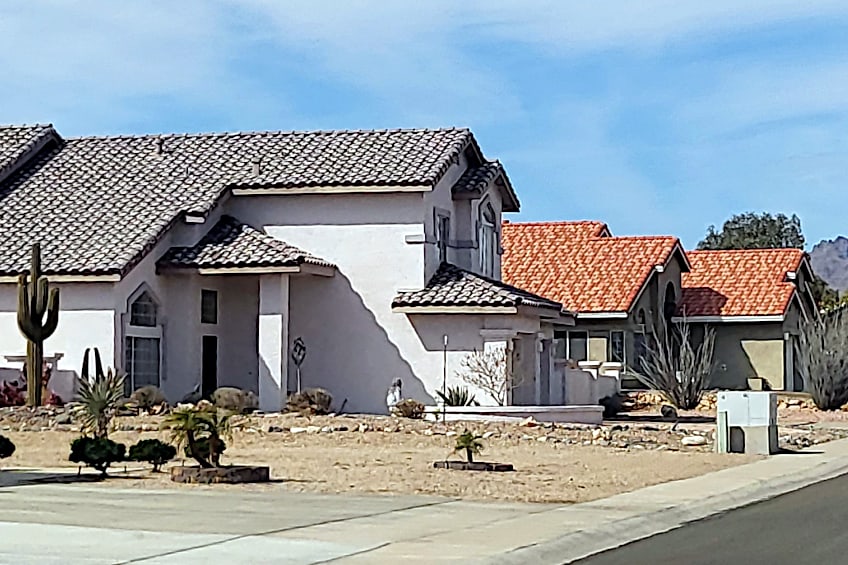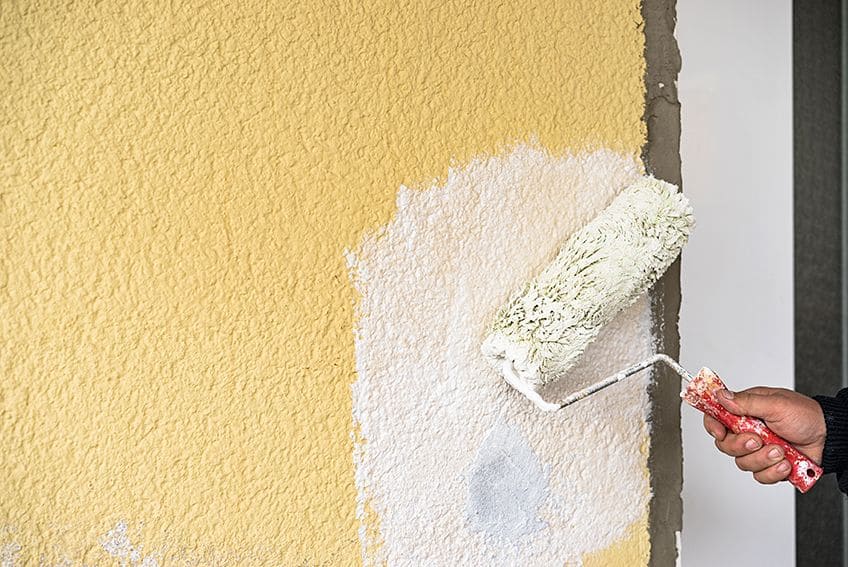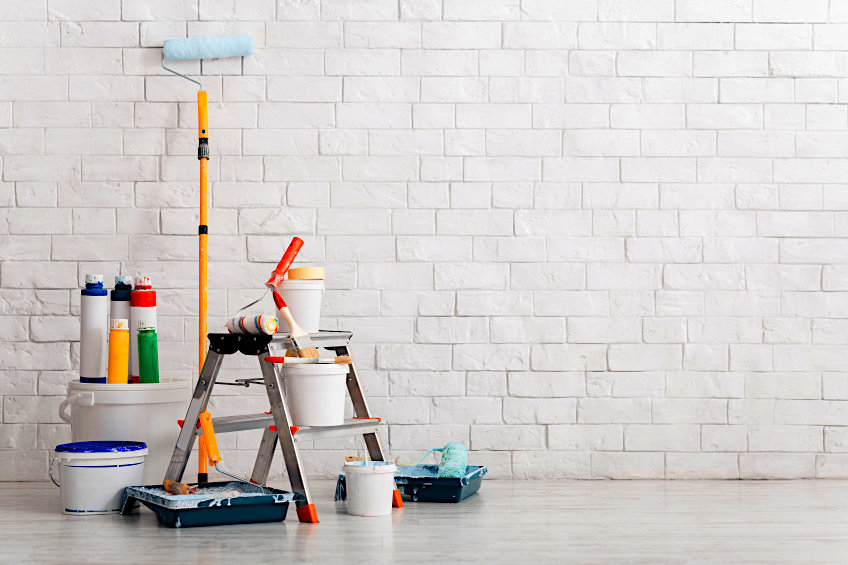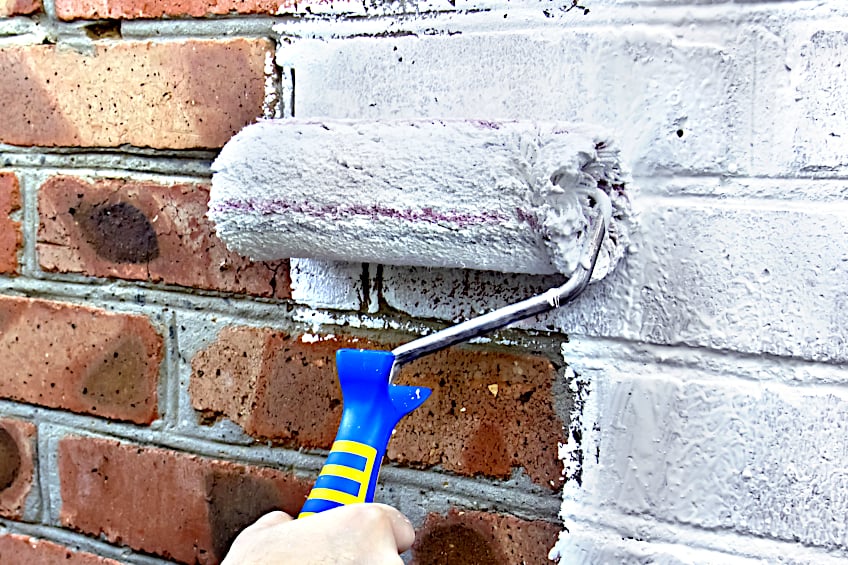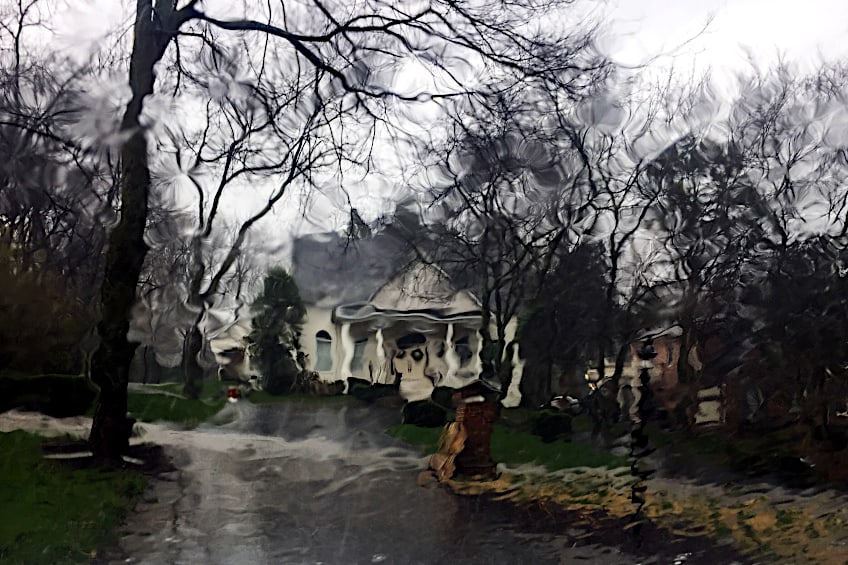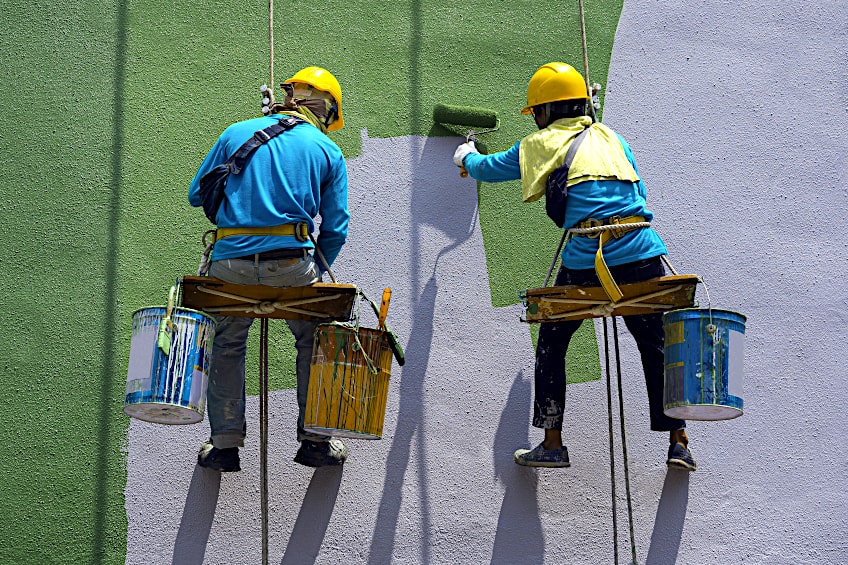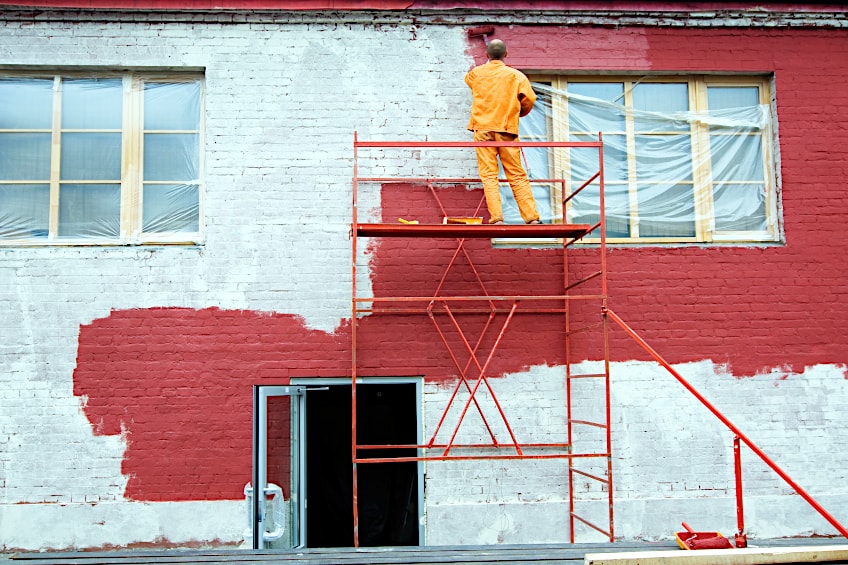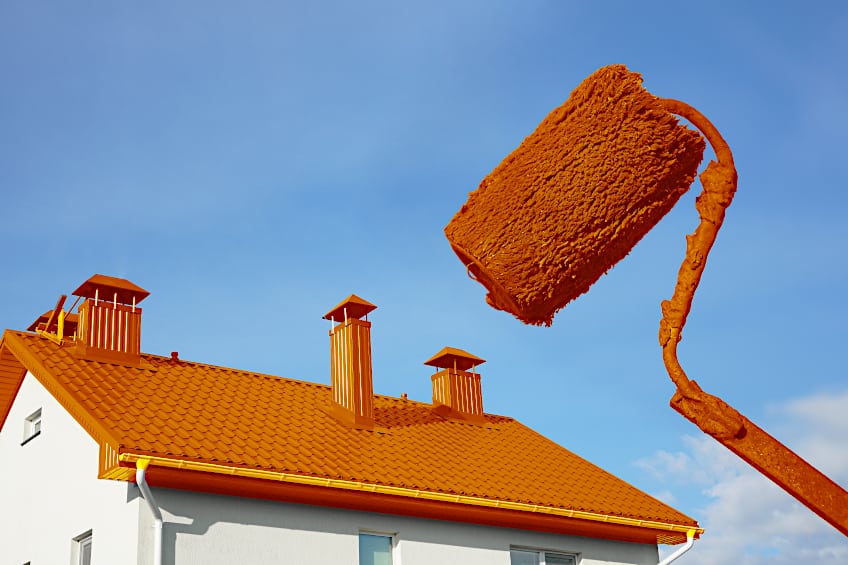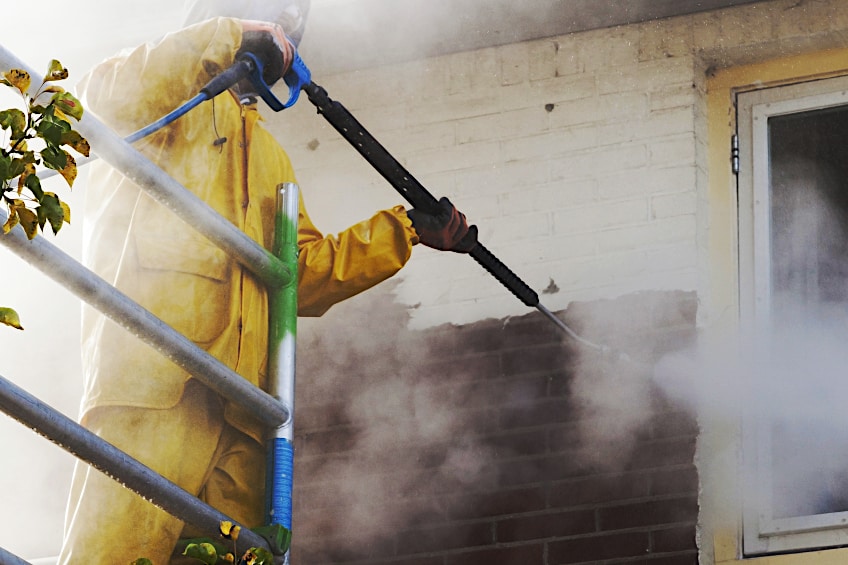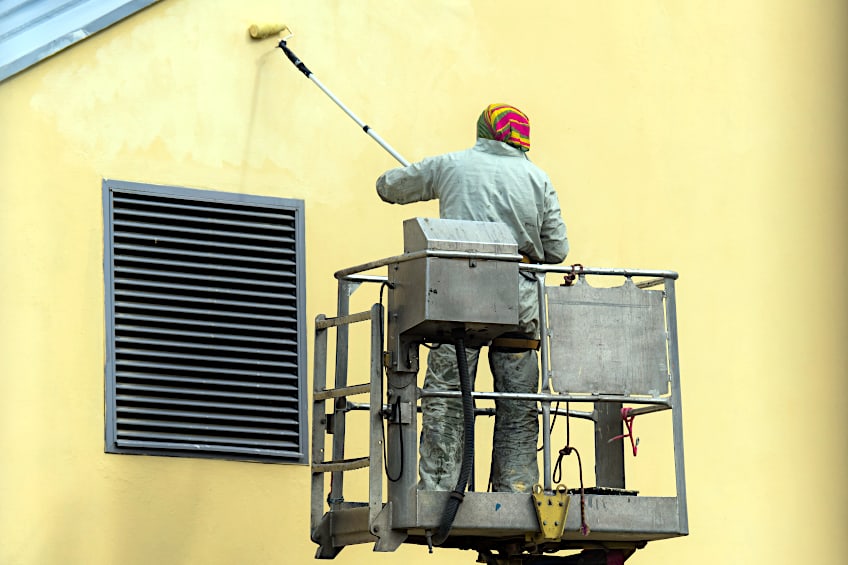What Is Elastomeric Paint? – Guide to Flexible Exterior Coatings
This post may contain affiliate links. We may earn a small commission from purchases made through them, at no additional cost to you. You help to support resin-expert.com
If you have a masonry home, you probably know how challenging it can be to ensure the surface is protected from harsh weather conditions. Some of the harshest weather that masonry is forced to endure is rain. Driving rain can slowly eat away at your masonry and leave it looking a bit worse for wear. One of the best ways to ensure your masonry is protected from these conditions is to apply a healthy coat of elastomeric paint. What is elastomeric paint, though? How does it work? Let’s have a look at these and some other commonly asked questions about elastomeric paint!
Table of Contents
What Is Elastomeric Paint?
Put simply, elastomeric paint is a thick, waterproof paint that has been specially formulated to protect masonry surfaces. If you are looking to protect pretty much any exterior masonry surface from harmful weather conditions this is arguably the best tool for the job, aside from dedicated paint sealers.
Despite what you might think, elastomeric paint has been around for a really long time.
It was initially created all the way back in the 1950s as a targeted response to exterior stucco that has begun to crack and peel away over time. These days, elastomeric paint is still an extremely popular choice when stucco and/or masonry needs to be sealed.
These days, elastomeric paint is still an extremely popular choice when stucco and/or masonry needs to be sealed. What makes an elastomeric coating so effective? Elastomeric paint is made of many individual substances that contribute toward the overall effectiveness of the coating. What exactly is inside it though?
Elastomeric paint consists of various elements that have been formed from large acrylic butyl, silicone molecules, and even a bit of polyurethane.
It is the combination of these substances that create a tight molecular structure capable of repelling moisture. This applied to rain directed by strong winds and even torrential downpours, which is what makes it such a popular weatherproof coating. It’s not impervious though, and even elastomeric coating will need to be replaced at some point.
Regardless, it’s still one of the most ideal coatings for exterior brick, mortar, or stucco. In fact, there aren’t many other substances that are capable of sealing exterior brick surfaces quite the same way that elastomeric paint does. This is why both DIY enthusiasts and professional contractors swear by the effectiveness of elastomeric paint.
Why Is It Important to Use Elastomeric Paint?
Now, you might be asking yourself why you need elastomeric paint if exterior paint is designed to withstand exterior forces. Well, there are a few reasons you might want to double up on the protection of your exterior walls, so we’ve made a short list of reasons why we think it’s a good idea to use this paint type on your exterior walls.
It is Watertight
Elastomeric paint is completely watertight and essentially acts as a barrier between your brickwork and the immediate atmosphere. Due to no moisture being able to penetrate beneath the surface, your home (or any other surface) is protected from the degrading effects of rain, wind, sand heat, impact, abrasion, and even mold!
Keep in mind though, that this means that any moisture that does find its way under your paint can get trapped there and cause interior mold.
It is Long Lasting
While most exterior paints tend to last for a really long time, elastomeric paint lasts even longer. While exterior paint is capable of withstanding harsh weather, in extreme cases the paint will begin to fall, especially in torrential downpours, snow, and hail. Elastomeric paint is far stronger and is capable of withstanding even the harshest weather conditions.
How long will elastomeric paint last you? A good quality elastomeric paint is capable of lasting up to 10 years under even the harshest weather conditions. This is why many homes in harsh climates have this coating applied in thick coats to ensure the brick and masonry aren’t damaged throughout the year as the seasons change.
It is Flexible
As the name implies, elastomeric paint is capable of bending. This is an important characteristic considering that masonry and stucco expand and contract as the temperature changes, which means that elastomeric paint needs to be able to keep up with these changes.
There are other paint types that are relatively flexible, but they’re nowhere near as stretchy as elastomeric paint.
It Is Dense
The characteristic that makes elastomeric paint so durable is its density. Elastomeric paint is incredibly dense, which is what makes it watertight while also allowing it to remain super flexible.
The drawback of this density is that while it does make the paint difficult to penetrate, it does not get very good coverage when compared to other paint types.
It Is a Strong Barrier
How strong is elastomeric paint? Well, aside from being able to withstand water and sunlight, elastomeric paint is capable of withstanding impact and abrasion too, like the kind experienced when sand and stones buffet the surface of walls in high wind conditions. As you can see, elastomeric paint is an incredibly versatile barrier for your painted surfaces, irrespective of where you live.
Is Elastomeric Paint Always Necessary?
It might not be. If you have already used multiple coats of exterior masonry paint on your surface it might be counterproductive to add elastomeric paint on top of it. Why? Elastomeric paint is rather dense, and since density and weight tend to coincide with one another, using elastomeric paint on your surface might result in your paint and/or stucco being stripped away from the substrate.
How Does Elastomeric Paint Work?
Ordinarily, paint consists of a base like oil or polymer, pigment, binder, and solvent. The way conventional paint types work is by hardening once they have been applied to the surface of the workpiece. Paint is wet when it’s applied, and once the solvent evaporates the paint loses moisture and eventually the pigment and base will solidify to form a solid surface coating.
Paints that don’t contain solvent simply dry as time progresses.
Elastomeric paint dries similarly, with the only difference being that the polymers bind closely together as the paint dries until a dense layer of elastomeric polymer has solidified on the surface of your workpiece. A cool feature is that elastomeric paint remains flexible despite its density when dry.
Elastomeric paint, therefore, works much in the same way that other paint types work, with the exception of the solvents present in the mixture. Therefore, aside from the thickness, elastomeric paint can be applied much in the same way that other paint types are applied, but many professionals tend to recommend using a sprayer when applying this paint type.
As we mentioned previously, elastomeric paint is capable of expanding and contracting as needed.
This is due to the large amount of polymer present in the composition of the paint. This is needed due to the way masonry tends to expand when hot and contract when cold. The bonds between the polymer are able to stretch quite a bit without being broken, and then snap back into position again.
The Pros and Cons of Elastomeric Paint
Like any other paint type, elastomeric paint has its pros and cons. While it might be really durable and quite effective in its intended application you might encounter some drawbacks depending on how you intend to use it. With that being said, let’s have a look at some of the advantages and disadvantages of elastomeric paint.
Pros of Elastomeric Paint
We have covered some of the pros of elastomeric paint previously, so we thought we’d elaborate on some other notable benefits of using this paint type when coating any exterior surface.
Remember, elastomeric paint might not always be the best option, but if the situation demands it you’ll be hard-pressed to find a better solution to sealing masonry.
It Protects Your Home
The reason most people purchase elastomeric paint is that it can protect their homes. There are very few surefire ways of protecting your home from a vast number of external forces, and if you’re looking for a coating that will undoubtedly withstand the test of time, elastomeric paint might be just what you’re looking for.
It Is Very Dense
Protective coatings tend to either be adaptive or extremely robust. Elastomeric is a somewhat rare combination of both of these characteristics. Aside from being able to expand and contract along with the substrate, it has been applied to, elastomeric paint is extremely dense once it dries and cured, and it’s this thickness of material that provides unparalleled protection to your masonry surfaces.
It Will Not Crack
Most protective coatings are static and need to be maintained regularly to ensure they continue to work as intended. However, elastomeric paint is virtually maintenance-free once it has been applied, and since it expands and contracts with the substrate it is applied to, you don’t have to worry about your elastomeric paint cracking and falling away over time.
It Is Watertight
This is arguably the most prominent feature of elastomeric paint. The molecular density of this paint ensures that once it has dried and cured, no moisture is able to penetrate the coating. This characteristic is not compromised when the paint expands and contracts along with temperature changes, making it an extremely popular paint type for exterior surfaces.
It Lasts Long
As you can probably imagine, a paint that is this dense and this stretchy would be really difficult for arbitrary weather conditions to damage. Therefore, elastomeric paint lasts for a really long time, up to a decade if the quality of the paint is good and if it has been applied correctly.
If you are looking for a coating that you don’t have to worry about once it’s been applied, this might be just what you are looking for.
Cons of Elastomeric Paint
There is no such thing as the perfect surface coating, and elastomeric paint is no exception to the rule. While it might be watertight, dense, and capable of flexing along with your surface, there are some less-than-desirable things associated with the use of elastomeric paint. Let’s have a look at a few of them and why they might have you shy away from this paint type.
It Can Be Pricey
Elastomeric paint can be far more expensive than other paint types. How much more expensive you ask? Elastomeric paint can cost up to 50% more than other more commonly used paint types. This makes elastomeric paint a bit more of an investment than a casual purchase, so it’s best to consider whether you really need it before continuing.
Elastomeric Paint Does Not Permeate
One of the characteristics that cause people to avoid this paint type (aside from the price) is that it does not permeate once it has been applied. What does this mean?
Essentially, it does not penetrate beneath the surface it is applied to, which means you better be sure your surface has been prepared correctly before you attempt to paint it.
It Needs to Be Applied Correctly
Generally speaking, everyone has some experience painting. However, elastomeric paint needs to be applied using a specific technique, and if it is applied incorrectly, it can ruin your finish. If applied incorrectly, it can leave behind bumps and dents that will crack over time, which is why many prefer hiring professionals when applying this paint type.
Types of Elastomeric Paint
Just as there are many variations of oil-based paint and acrylic-based paints, there is more than one type of elastomeric paint. Each of these variations is designed to suit a specific application, so let’s have a look at a few of them, what makes them so special, and what exactly their intended applications are in the painting.
Acrylic Elastomeric Paint
Acrylic elastomeric paint is the cheapest of the elastomeric variations. It is roughly 58% polymer and 42% water, which means that a large portion of the paint evaporates once it has been applied.
This type of elastomeric paint has been used to coat roofing and ensure that water in the form of rainfall and humidity is quickly dispelled.
Urethane Elastomeric Paint
The crème of the crop of elastomeric paints is the urethane variant, and what most people are referring to when discussing this paint type. Not only is it resistant to water but it is also resistant to impact, abrasion, heat, and UV light, and is capable of expanding and contacting along with the substrate it has been applied to.
Silicone Elastomeric Paint
Silicone elastomeric paint is a step up from the acrylic variant. It consists of about 96% polymer and only about 4% of its composition is the base.
It is twice as resistant to all forms of moisture and is far more durable than its acrylic counterpart.
This also means it is notably more expensive, but considering how durable it is, we think it’s well worth paying a few extra bucks.
Where Can Elastomeric Paint Be Used?
While most other paint types are pretty versatile, elastomeric paint has some pretty specific applications. Due to this, it doesn’t have the same mass appeal and therefore can be quite expensive to purchase (as people don’t purchase it as often as other paints). With that being said, here are some of the common applications for elastomeric paint.
Commercial and Residential Buildings
Commercial and residential buildings tend to be made from brick and mortar, at least most exterior parts of them. Considering that resurfacing exterior brickwork can be difficult and expensive, investing in applying elastomeric paint to these structures can save you a ton of money in the long run, and keep them looking great!
Concrete Surfaces
Concrete tends to be really porous. These little pores can allow things like rain, sand, airborne moisture, insects, and mold to enter the concrete and eventually cause it to degrade over time.
Therefore, sealing your concrete is a good idea and one of the best ways to go about is to apply some elastomeric paint.
Roofing Surfaces
One of the most popular applications of elastomeric paint is roofing surfaces. These surfaces take a lot of punishment, whether it be from sunlight, rain, hail, and/or wind. They need to be protected, and as we mentioned previously, acrylic elastomeric paint is one of the best long-term solutions for protecting most roofing substrates.
Masonry Surfaces
Another highly porous surface that you might want to consider sealing is masonry or brick surfaces. Like concrete, they have pores that are exposed to the elements. While they can last for a really long time without a coating, if you apply a healthy coat of elastomeric paint your brick and masonry work can last you a lifetime!
Tips for Applying Elastomeric Paint
Even though elastomeric paint can be an incredible coating it can be a bit tricky to apply. With that being said, let’s have a look at some tips you can implement to ensure that your surface coating not only looks good but lasts for at least the next decade or so.
If you’d like some more guidance there are many video tutorials online detailing the preparation and application process.
Ensure the Surface Is Prepared Correctly
Preparing for an elastomeric coating is much the same as any other painting job, except you need to be a bit more meticulous. Before you begin, pressure wash the surface of your workpiece (if you are painting masonry or concrete) to get rid of things like mold and grime that may have built up over time. Once the surface is clean, allow it to dry completely.
Once the surface has been cleaned you will need to fill in any cracks and recesses that have formed as a result of damage. You can use filler or any other applicable substance to ensure that you have a flush surface on which to apply your paint. Once all of the holes have been filled, allow the filler to set as recommended by the manufacturer.
Apply Your Paint Correctly
The best tool for applying elastomeric paint is to use a roller with a nap designed for acrylic paint. Pour some paint out into a tray and start by cutting in edges and corners with a fine bristle brush. Once the corners have been painted, dip your roller in the paint, wipe off any excess, and begin painting the bulk of the surface.
We recommend applying your paint in “v” formations to ensure that the paint spreads evenly.
Ensure that you do not miss any spots and make sure that you apply the paint in a thick coat so it forms a robust layer once it dries. When your wall has been painted completely, allow the paint to set as recommended on the container and/or instructions before attempting to apply a second coat.
Do Maintenance As Needed
Once the paint has been applied you might be inclined to sit back and forget about it. However, even though elastomeric paint is very durable it is not infallible and will need to be maintained eventually. Maintaining elastomeric paint is really simple, just clean the area that has begun to scuff or degrade and repaint the affected area with the same paint as before.
Elastomeric coatings rarely need maintenance, and those that do are often exposed to extremely harsh conditions.
For example, roofing material that has elastomeric paint on it will need to be maintained more often, especially if weather conditions it has been exposed to are particularly hostile to it.
That is all you’ll need to know about how to use elastomeric paint and what surfaces it is best suited to coating. Remember that you might not always need to use elastomeric paint depending on your substrate and existing paint job, and that you should always ensure that your surface is correctly prepared for this paint type before an application is attempted.
Frequently Asked Questions
Can You Paint Over Elastomeric Paint?
If elastomeric paint is an exterior coating, can you paint over it? Yes, elastomeric paint can be painted over with another coat of the same paint type, or with any acrylic exterior paint should the situation demand it.
What Is Elastomeric Paint Used For?
Elastomeric paint is a highly durable, incredibly dense paint that often exceeds other commonly used paint types in price. What is elastomeric paint used for, though? Usually, elastomeric paint is used to coat exterior masonry, concrete, and stucco surfaces.
How Long Does Elastomeric Paint Last?
Elastomeric paint is capable of lasting a really long time given that it is applied and maintained correctly. How long exactly? A good quality elastomeric paint is capable of lasting over a decade should it be applied and maintained as directed by the manufacturer.


